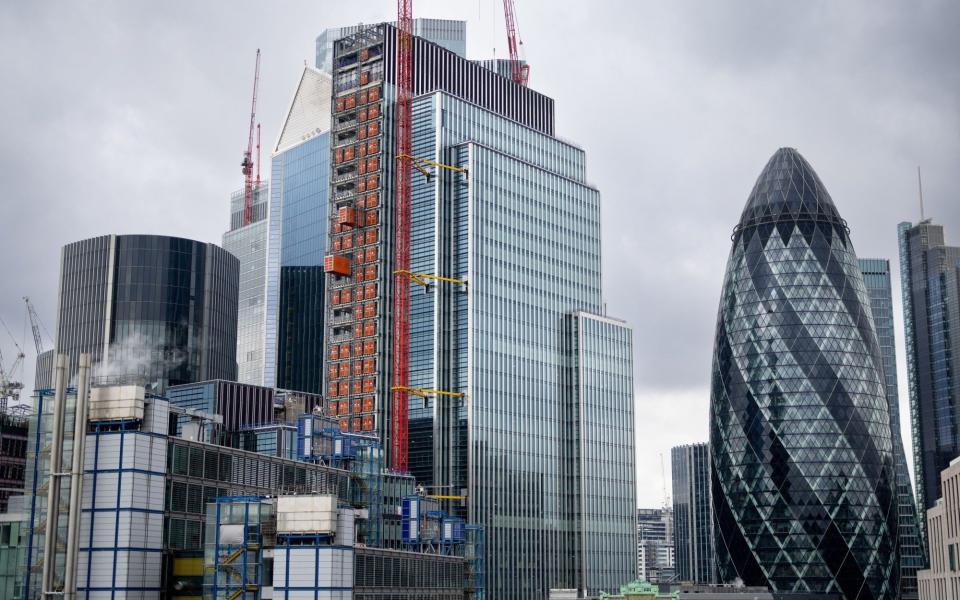
“Americans can rest assured that our banking system is safe. Your deposits are safe.” As guarantees go, they don’t come much better than a personal one from the US president – delivered from the White House lectern too, for added punch.
Yet the concern for Joe Biden is that his words, in the aftermath of the collapse of several American banks, not just Silicon Valley Bank (SVB), took a while to sink in.
Despite such reassurances, global bank shares continued to slide for a third day, with the panic spreading to Asia, pummeling regional financial lenders and share indices, before markets eventually staged a strong rally. Nevertheless, $465bn had wiped off financial stocks in the previous two days, Bloomberg has calculated.
The worst of the rout was concentrated in US regional bank shares. San Francisco-based First Republic lost 62pc of its value, Arizona-headquartered Western Alliance Bancorp fell 47pc and Cleveland’s KeyCorp dropped 27pc on Monday. First Republic and Western Alliance are also among six provincial lenders that have been downgraded by the ratings agencies Moody’s.
In one sense, this focus on a specific corner of the banking industry is reassuring because it suggests investors for the most part understand what the problem is.
The unravelling of SVB has shone the light back on a whole tier of mid-ranking but still sizable US banks that had more or less completely slipped off the radar.

It is an oversight that must be laid squarely at the door of Donald Trump, and has potentially serious implications for the Chancellor’s attempts to roll back financial services regulation in Britain through the so-called Edinburgh Reforms.
In 2018, Trump, the then-US president, signed a new law called the “Economic Growth, Regulatory Relief, and Consumer Protection Act”, but it may have just as easily been called the “Rainbows, Unicorns and Fairies Act” because the idea that you could have all three of those things at the same time is for the birds.
Yet despite the giant red flag of a name, the law was passed anyway, paving the way for widespread relaxation of rules that had been introduced in the shadow of the financial crisis to prevent a repeat of excessive risk-taking.
The argument at the time was that many of the provisions found in the Dodd-Frank Act amounted to a one-size-fits-all approach. Regional lenders insisted that they should not be the focus of the same level of supervision because they were not systemically important. They also claimed that the over-burdensome regulations would make it harder for them to provide a genuine alternative to the titans of American banking such as Bank of America and JPMorgan.
The changes lifted the threshold at which banks are subject to stricter oversight from $50bn to $250bn, allowing Silicon Valley Bank – with $209bn in assets at the end of 2022 – to slip through the net.
It meant a whole second and third tier of banks escaped the Federal Reserve’s annual “stress tests”, and other financial safety requirements – a move that some lenders may have interpreted as carte blanche to do as they please.
SVB shareholders have accused the bank’s boss Greg Becker and its finance chief Daniel Beck of concealing how rising interest rates would affect the bank.
Nevertheless, a more alert regulator should have been able to spot some of the risks quite easily. Deposits grew rapidly and 96pc of those were not covered by the federal insurance policy. The bank then made a massive bet on long-term fixed-rate bonds, which left SVB hugely vulnerable to a sudden swing in interest rates.
It also became hugely reliant on the Federal Home Loan Bank system for funding, which suggests it was struggling to access more mainstream sources of financing. Perhaps most alarmingly, SVB also had no risk officer for most of 2022.
The warning signs were everywhere and the failure to spot them raises the question of what else has fallen through the cracks, hence the breadth of the market sell-off. At times, the light-touch regime that Trump’s repeals ushered in appears to have basically meant there was no oversight at all for smaller banks.
The British Government will probably baulk at the suggestion that its proposed Big Bang 2 reforms are comparable to Trump’s sweeping reforms of Dodd-Frank because Jeremy Hunt wants to do away with rules that were set up for European insurers and perhaps were never really suitable for their UK counterparts.
But the idea that removing red tape will boost growth is still broadly the same, and it too comes with risks. If the Treasury wants to make it easier for insurers to invest in private equity, property and infrastructure then it has to accept that there is a trade-off.
It will mean that capital is trapped in long-term illiquid assets that are difficult to access in the event that the industry finds itself facing a flurry of big payouts – essentially what happened with SVB.
This is no surprise. Those in power always seem to get regulation the wrong way round, choosing a procyclical approach when what is really needed is countercyclical policy.
We overshackled the banks after the crisis when what was really needed was some exuberance and risk-taking to turbocharge the world economy out of its post-bailout slump.
Then somebody decides that the rules are too onerous just in time for the next crisis. How easily the mistakes of last time appear to have been forgotten.
Source: finance.yahoo.com
